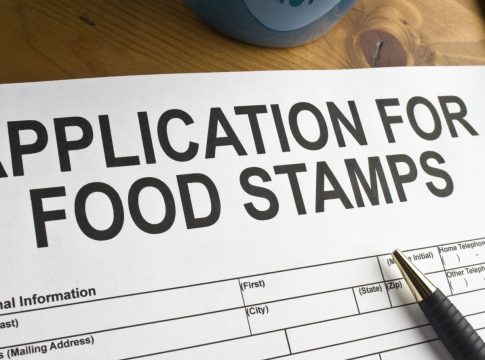The Supplemental Nutrition Assistance Program (SNAP), commonly referred to as food stamps, is a vital resource for millions of Americans. It provides financial assistance to low-income households to purchase healthy food at authorized retailers. If you’re facing food insecurity, SNAP can make a significant difference in putting nutritious meals on the table for you and your family.
This blog post will guide you through the application process for SNAP benefits, explain eligibility requirements, and provide helpful resources to make informed decisions.
Understanding SNAP Eligibility
The primary factor determining SNAP eligibility is your household income. The USDA sets national income limits based on the federal poverty line. However, individual states have the discretion to adjust these limits slightly. To find out the income limits in your state, visit the Food and Nutrition Service (FNS) website: https://www.fns.usda.gov/snap/applicant-recipient
Here’s a breakdown of the basic eligibility criteria:
- Income: Your gross monthly income must fall at or below a specific percentage of the federal poverty line. This percentage varies depending on your household size.
- Citizenship: You or at least one household member must be a U.S. citizen, legal permanent resident, or other qualified immigrant.
- Residence: You must live in the state where you’re applying.
- Work Requirements: Able-bodied adults without dependents between 18 and 50 years old must meet specific work registration requirements.
Important Considerations
While income is a primary factor, other aspects can influence eligibility. Here are some additional points to consider:
- Household Size: The income limit is adjusted based on the number of people in your household.
- Resources: Some states may consider countable resources, such as savings and investments, when determining eligibility.
- Student Status: College students may have limitations on eligibility, with some exceptions.
Gathering Required Documents
Before applying, ensure you have the necessary documentation to support your application. The specific documents needed may vary by state, but generally include:
- Proof of income (paystubs, tax return)
- Proof of residency (utility bill, lease agreement)
- Social Security numbers for all household members
- Proof of citizenship (if applicable)
- Documentation of any disability (if applicable)
Applying for SNAP Benefits
There are three main ways to apply for SNAP benefits:
- Online: Many states offer online applications. You can find your state’s SNAP agency website by visiting the Food and Nutrition Service website: https://www.fns.usda.gov/snap/applicant-recipient
- In Person: You can visit your local SNAP office to submit a paper application and speak with a representative.
- By Mail: Download an application form from your state’s SNAP agency website, complete it, and mail it to the designated address.
The Application Process
The application process typically involves:
- Completing the application: Provide accurate information about your household’s income, expenses, and household members.
- Submitting verification documents: Provide documentation to support the information you provided in the application.
- Interview (optional): A SNAP representative may contact you for a brief interview to clarify any details in your application.
- Eligibility determination: The agency will review your application and notify you of the decision within 30 days.
Benefits and Using Your EBT Card
If approved, you will receive a monthly allotment of SNAP benefits electronically transferred to an Electronic Benefits Transfer (EBT) card. This card functions similarly to a debit card and can be used to purchase eligible food items at authorized retailers. You can find a list of authorized retailers in your area on the SNAP website: https://www.fns.usda.gov/snap/retailer
SNAP Benefits and Healthy Eating
SNAP benefits allow you to purchase a wide variety of healthy food items, including:
- Fruits and vegetables
- Dairy products
- Meat, poultry, and fish
- Bread and cereals
- Seeds and plants that produce food for the household
While SNAP cannot be used to purchase prepared meals, alcohol, tobacco products, or non-food items, it provides a valuable foundation to build a healthy diet for your family.
The USDA offers resources and tips for healthy eating on a budget: https://www.myplate.gov/
Additional Resources
- National Hunger Hotline: 1-866-3-HUNGRY (1-866-348-6479)
- Benefits.gov: https://www.benefits.gov/ (Provides information on various government benefit programs)
- Feeding America: https://www.feedingamerica.org/ (Locate food banks and pantries in your area)
Seeking Help with the Application Process
If you need assistance with the application process or have questions about eligibility, don’t hesitate to contact your local SNAP agency. Many community organizations also offer application assistance and SNAP outreach programs.
Conclusion
SNAP is a crucial program that helps millions of Americans access nutritious food. By understanding the eligibility criteria, application process, and how to use your benefits effectively, you can leverage this program to improve your household’s food security and overall well-being.
Remember, there is no shame in seeking help. If you are struggling to afford food, SNAP can make a significant difference. Take advantage of this program and the many resources available to ensure a healthy diet for yourself and your family.
